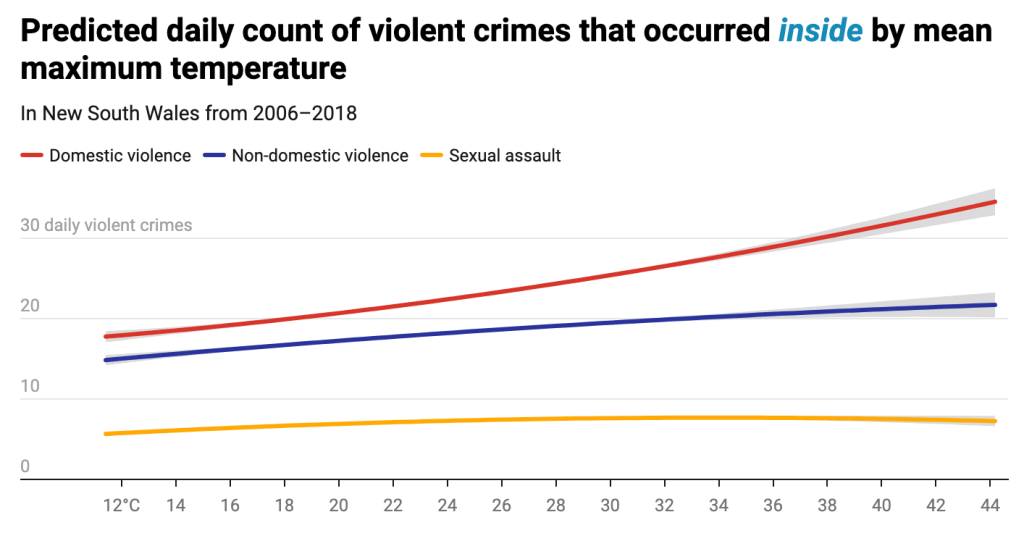
CONTENT WARNING: This article discusses domestic violence.
A study from New South Wales has found that there is a disturbing correlation between warmer weather and domestic violence, highlighting that as the temperature rises, so do tempers — to horrible effects.
As the Australian summer continues to flare into its full and devastating potential, with millions of Aussies hiding inside to try and keep cool, experts remind us that taking refuge from the heatwave at home isn’t an option for everyone.
A report from SBS News recently brought to light the relationship between hot temperatures and violence, which analysed almost a million instances of domestic violence, assault, and sexual assault between the years 2006-2018.
The report then identified the trends around when and where these cases of violence occurred; whether it was inside or outside, and what the temperature was at the time.
What it found was that there was a notable increase in violence as the hot weather also increased, and that overall a variety of types of “violence rose as temperatures increased from cool to warm.”
Here’s what the stats had to show for the amount of violence occurring indoors as temperatures rose:

As the data shows, the rise in domestic violence occurring indoors follows the rise in heats. On the more extreme days that are over 40°C the spike gets even higher for DV, though can be seen to flatten for other forms of violence.
The researchers suggest the reason for this trend could be how the culmination of physical effects from hot weather — sweating, irritation, impacted sleep, dehydration — result in higher feelings of aggression, and therefore more violence.
They also hypothesised that other behavioural factors associated with hot weather could come into play, such as the increased consumption of alcohol on a hot day, which would then contribute to a rise violent behaviours.
In the report the experts suggested the concept of “heat refuges” for vulnerable people to stay in and cool off, whilst also avoiding potential violence at home.
While it is important and helpful to understand the causes for increases in domestic violence, whether it’s heat or alcohol or location, at its core the issue is a stain on Australian society, and more needs to be done to prevent and stop it.
Hopefully this data can be used in future to aid victims of domestic violence on hot days, and to better educate its perpetrators on how they can express their anger at the climate without the need to cause senseless harm.
Help is available.
- If you require immediate assistance, please call 000.
- If you’d like to speak to someone about domestic violence, please call the 1800 Respect hotline on 1800 737 732 or chat online.
- Under 25? You can reach Kids Helpline at 1800 55 1800 or chat online.



